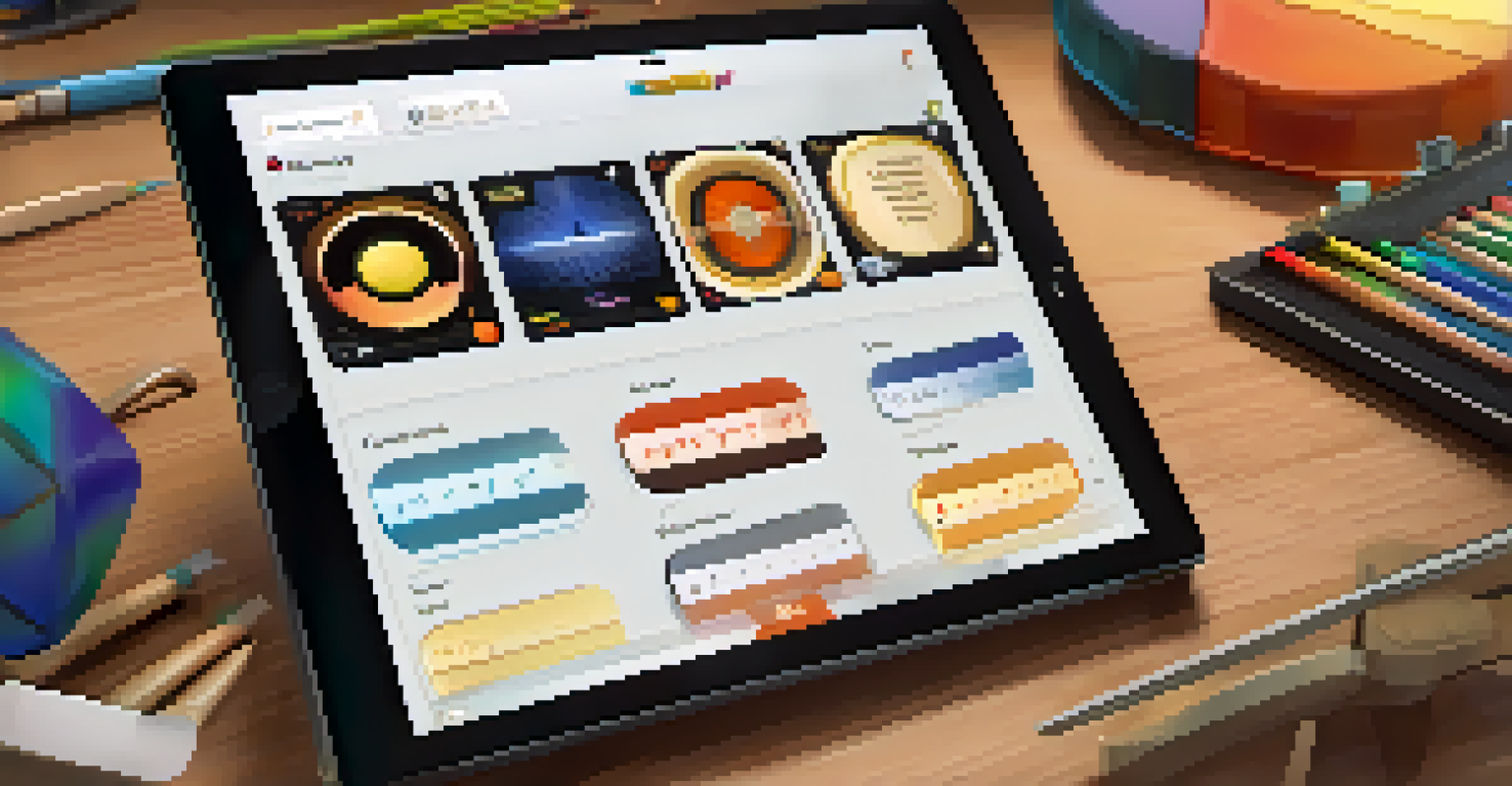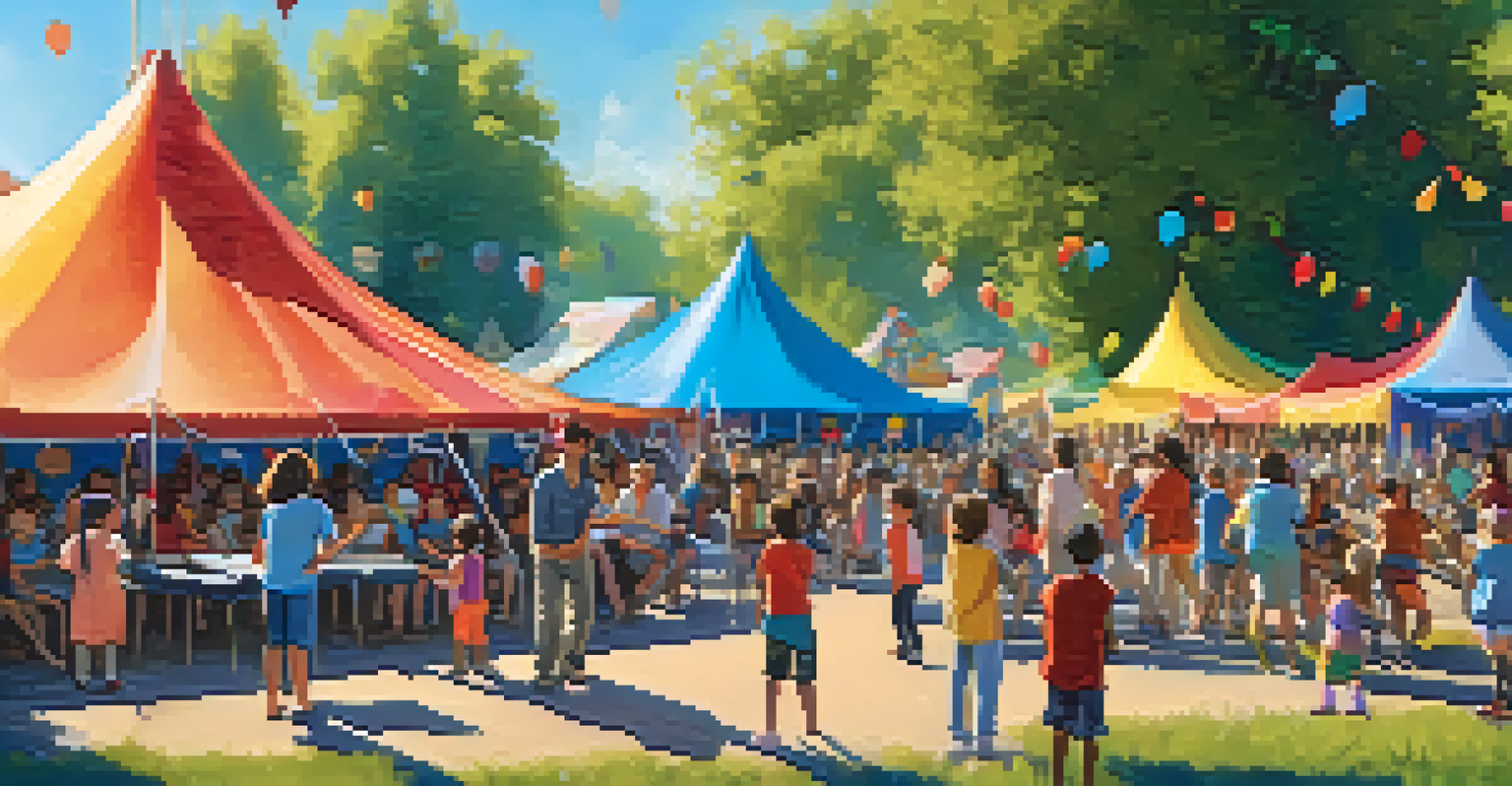Gamification in Music Education: Engaging Young Learners

Understanding Gamification and Its Benefits
Gamification involves incorporating game-like elements into non-game contexts, like education. This approach leverages the natural desire for competition and achievement, which can be particularly beneficial in engaging young learners. By integrating points, levels, and rewards, educators can create a more dynamic learning environment that captures students' attention.
Gamification is not just about adding points and badges; it's about creating an engaging experience that motivates learners to explore and achieve.
In music education, gamification can transform traditional lessons into interactive experiences. Imagine students earning badges for mastering a new piece or competing in friendly challenges to enhance their skills. This not only makes learning fun but also motivates students to progress and stay engaged.
Moreover, gamification can cater to different learning styles. Some students thrive on visual rewards, while others may prefer the thrill of competition. By providing various avenues for achievement, music educators can create a more inclusive atmosphere that encourages all students to participate actively.
Creating a Gamified Music Curriculum
To effectively gamify music education, educators must first define clear learning objectives. This ensures that the gamified elements align with the skills students need to develop. For instance, if the goal is to improve rhythm, teachers can design rhythm-based games that allow students to practice through play.

Next, incorporating technology can enhance the gamified experience. Music apps and online platforms often feature built-in games that teach music theory or instrument skills. By leveraging these tools, educators can offer interactive lessons that resonate with tech-savvy young learners.
Gamification Engages Young Learners
Incorporating game elements in education captivates students, making learning more fun and motivating.
Additionally, it’s essential to foster a community within the classroom. Group challenges or collaborative music projects can promote teamwork and camaraderie among students. This not only enriches the learning experience but also builds lasting friendships through shared achievements.
Examples of Gamification in Music Education
One popular example of gamification in music education is the use of music learning apps like Yousician or Simply Piano. These apps gamify the process of learning instruments by providing instant feedback, level progression, and rewards for practice. Students are more likely to engage with these tools because they feel like they are playing a game rather than just practicing.
The goal is to turn data into information, and information into insight.
Another example is implementing classroom competitions, such as 'Music Olympics,' where students compete in various musical challenges. This could involve sight-reading, rhythm clapping, or improvisation contests, where points are awarded for creativity and skill. Such activities not only enhance learning but also foster a spirited classroom environment.
Lastly, teachers can create a personalized 'quest' for each student, where they set specific musical challenges tailored to their interests and skill levels. By completing these quests, students can earn rewards and recognition, making their learning journey unique and exciting.
Challenges of Implementing Gamification
While gamification offers many benefits, implementing it in music education can come with challenges. One concern is the potential for students to focus more on rewards than on actual learning. If not managed properly, students may prioritize winning over mastering musical concepts, which can hinder their overall progress.
Another challenge is the varying levels of student engagement. Some learners may thrive in a gamified environment, while others might feel overwhelmed or disengaged. Educators must be attuned to their students' responses and adapt their approach accordingly to ensure everyone benefits from the gamification strategy.
Technology Enhances Music Education
Utilizing apps and online tools allows for interactive learning experiences that resonate with tech-savvy students.
Lastly, there is the need for ongoing assessment and feedback. Educators must continuously evaluate the effectiveness of gamified elements and make adjustments as necessary. This requires a commitment to monitoring student progress and being flexible in teaching methods to ensure that the focus remains on music education.
The Role of Technology in Gamified Music Education
Technology plays a pivotal role in enhancing gamification in music education. With advancements in software and apps, educators have access to a plethora of tools that can make learning more interactive. For instance, software that allows students to compose and share their music can create a sense of ownership and achievement.
Moreover, online platforms can facilitate competition beyond the classroom. Students can participate in global music challenges, earning accolades and recognition from peers worldwide. This not only motivates students but also exposes them to diverse musical styles and cultures.
However, it’s important to strike a balance between screen time and traditional learning methods. While technology can provide exciting opportunities, hands-on experiences with instruments and face-to-face collaboration are equally vital in music education.
Engaging Parents and the Wider Community
Engaging parents and the wider community can enhance the impact of gamification in music education. Encouraging parents to participate in their children's musical journeys fosters a supportive environment at home. For instance, hosting 'family music nights' where parents and children can engage in musical games together can strengthen these connections.
Additionally, involving the community can provide students with real-world performance opportunities. Organizing local music competitions or festivals can give students a platform to showcase their skills, enhancing their confidence and motivation. Community involvement can also help in securing resources and support for music programs.
Community Involvement Boosts Learning
Engaging parents and the community fosters support for music education, enhancing student motivation and performance opportunities.
Furthermore, sharing progress through social media or school newsletters can create a sense of pride and accomplishment. Highlighting students' achievements in gamified activities can inspire others to participate and reinforce the value of music education within the community.
Future Trends in Gamification and Music Education
As we look to the future, the integration of artificial intelligence (AI) in gamified music education is on the rise. AI can provide personalized learning experiences, adapting challenges to suit individual student needs. This means that every learner can progress at their own pace while still being engaged through gamified elements.
Moreover, the rise of virtual and augmented reality (VR and AR) offers exciting possibilities for immersive music experiences. Imagine students learning to play instruments in a virtual band or exploring the history of music through interactive AR lessons. These technologies can transform music education into an engaging adventure that transcends traditional methods.

Ultimately, the future of gamification in music education looks promising. As educators continue to innovate and embrace new technologies, the possibilities for engaging young learners will only expand, making music education a vibrant and enriching experience for all.